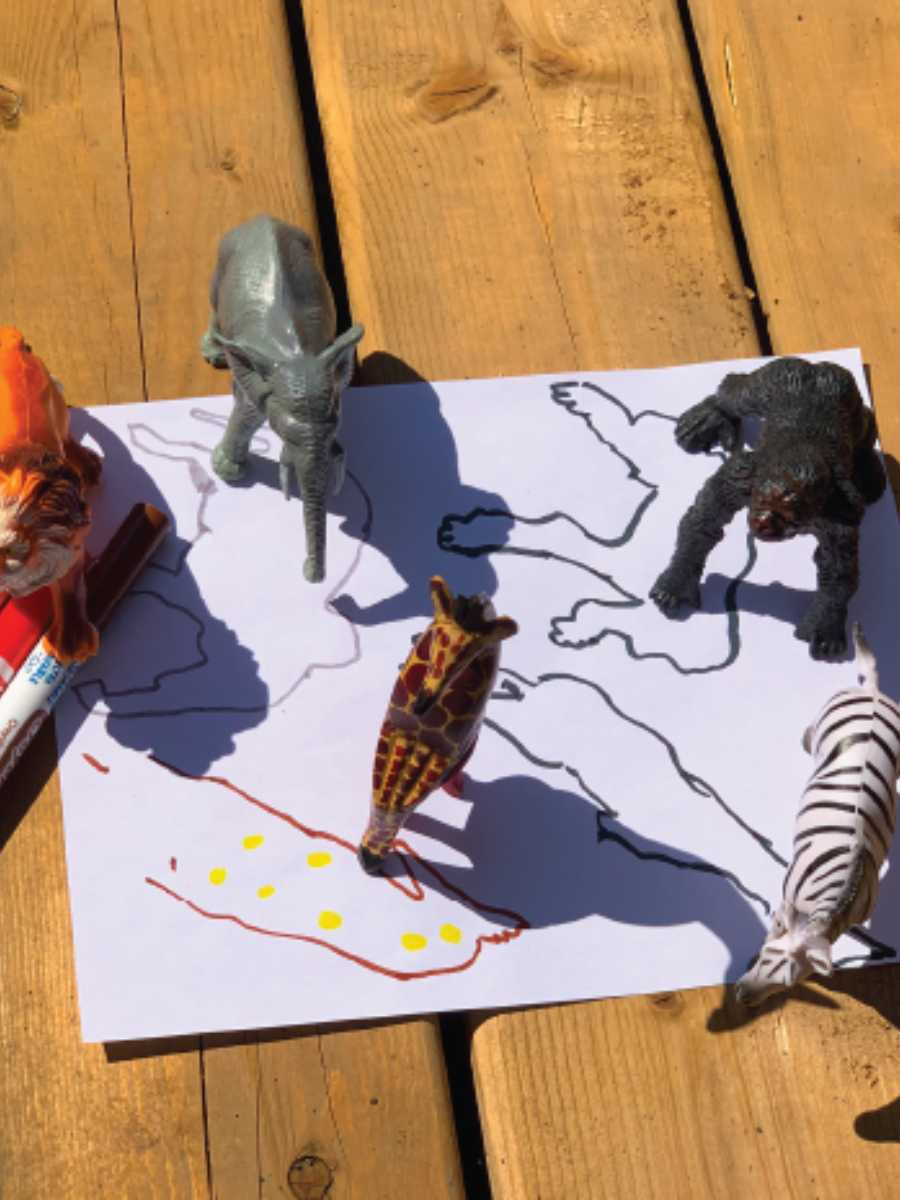Fun & Games: How Parents Can Support Early Learning Through Fun Activities
You want to give your child the best early childhood education in life as a parent. But that’s not always possible. You might be up against issues such as:
- Finding quality child care: Many parents have a problem finding a daycare or preschool that’s both affordable and convenient.
- Too much screen time: Keeping children entertained while staying out of reach of tablets, and television proves challenging.
- Prep before school: You don’t just want a child to start learning basic stuff when she goes to school for the first time; you also want her to have been primed socially and emotionally.
The best part? Learning through play. Play is not just a means of having fun, but it is the best way of learning for children. While children play, they develop the skills of solving problems, learn to share, and enhance creativity.
For instance, children think they are playing make-believe. They are building with blocks to help develop motor skills and learn some basic math concepts. Some little fun & games, such as going for a walk for “I spy,” or counting apples at the store can also assist the child in learning.
You don’t need fancy toys or extra time to make learning fun. In this blog, we’ll show you easy ways to use play to help your child grow and learn every day.
The Science Behind Play and Learning
Research proves that play is not just fun but an integral part of the early developmental process.
When your little one plays, their brain makes connections that help them make sense of the world. For example, stacking blocks helps them learn about balance and gravity. Imaginative play, such as pretending to have a tea party, also supports the development of language and social abilities. Research has also shown that playing activities enhance problem-solving abilities and creativity.
Problem-Solving Abilities and Creativity
Experts have identified that play helps in increasing social skills in a child. For example, games like taking turns will teach patience and cooperation. Through playing, kids learn how to let others know how they feel and understand others’ feelings. This aspect of intelligence is necessary for the nurturing of good interpersonal relationships.
Physical Development
Running or climbing all fall under the category of active play, and this helps keep your body in good working order by strengthening muscles and improving coordination. Some, like playing tag, or riding a bike, encourage an enjoyment of motion, laying a foundation for an active lifestyle.
Play-Based Learning
Many schools have adopted an approach that involves learning through play. That is, play is incorporated into daily lessons so that learning becomes fun and interesting. For instance, a day at the beach can be turned into a science and math lesson when studying tide and marine life.
Practical Advice for Parents
- Let your kid have free time to explore and play around without any rules or structure.
- Take part in their play to build a connection and facilitate learning.
- Have different types of toys available that encourage varied play, from problem-solving games to drawing materials.
Fun & Games for Multi Age Groups
Each activity is discussed on a more detailed level with more benefits and possible modifications or alternatives – all still designed to combine fun and learning while being practical for parents.
Educational Activities for Toddlers (1-3 Years Old)
1. Sink or Float Experiment

- Fill a large bowl or bathtub with water.
- Gather objects of different materials (plastic spoon, wooden block, metal key, rubber ball, sponge, etc.).
- Ask your toddler to guess if an item will sink or float before placing it in the water.
- Talk about why some things stay on top and others go to the bottom.
Benefits:
- Helps develop early science and problem-solving skills.
- Encourages observation and prediction.
- Improves focus and patience.
Variations:
- Try using fruits and vegetables (an apple floats, a grape sinks).
- Change the water depth to see if it affects results.
2. Texture Walk – Exploring Senses
- Lay different materials on the floor: bubble wrap, soft blanket, rough doormat, cold tiles, damp sponge, sandpaper.
- Let your toddler walk barefoot across them and describe what they feel.
- Use words like “soft,” “bumpy,” “rough,” or “squishy.”
Benefits:
- Helps with sensory development and language skills.
- Encourages body awareness and balance.
Variations:
- Do the activity outside with natural textures: grass, sand, pebbles.
- Add a mystery element—cover their eyes and let them guess what they’re stepping on!
3. Sorting and Matching with Real Objects
Give your child everyday objects and ask them to sort them:
- Socks by colour or size.
- Fruits by type (round fruits, long fruits).
- Spoons and forks separately.
Praise them for finishing a set and encourage talking about the objects.
Benefits:
- Builds early math and organizational skills.
- Teaches problem-solving and logical thinking.
Variations:
- Use a muffin tray or empty egg carton for sorting small items.
- Increase difficulty by sorting objects into three or more groups.
Educational Activities for Preschoolers (3-5 Years Old)
1. Letter and Number Hunt – Learning Through Play
- Write letters or numbers on sticky notes and place them around the house.
- Call out a letter or number and have your child find it.
- Encourage them to say the letter or number out loud and stick it in the right order on a board.
Benefits:
- Strengthens letter and number recognition.
- Improves memory and active listening.
Variations:
- Hide letters in the backyard and turn it into a treasure hunt.
- Use foam letters in the bathtub for a fun bath-time version.
2. Ice Cube Rescue – Fine Motor Skills & Science
- Freeze small toys or beads inside ice cubes.
- Give your child tools like a spoon, salt, or warm water in a spray bottle to “rescue” the toys.
Benefits:
- Strengthens fine motor skills (gripping, squeezing).
- Teaches problem-solving and patience.
Variations:
- Use coloured water to make it more visually interesting.
- Compare how different methods melt the ice (hot vs. cold water, salt vs. no salt).
3. Grocery Store Math – Learning with Everyday Errands
At the grocery store, ask your child to:
- Count the bananas as you put them in the bag.
- Find the number “5” on price tags.
- Guess which fruit is heavier before weighing them.
Benefits:
- Reinforces counting and number recognition.
- Teaches real-world math skills in a practical setting.
Variations:
- Let them compare prices and find the cheaper option.
- Introduce the concept of budgeting by giving them a small amount to “spend.”
4. Shadow Drawing – Art Meets Science
- On a sunny day, place different toys (cars, dolls, dinosaurs) on a large sheet of paper.
- Trace their shadows with a marker.
- Let your child colour in the shapes or turn them into creative drawings.
Benefits:
- Introduces light and shadow concepts.
- Encourages creativity and attention to detail.
Variations:
- Try tracing your own shadows.
- Do it at different times of the day and observe how shadows change.
Educational Activities for Kids (5-7 Years Old)
1. Money Counting with Canadian Coins
- Gather different Canadian coins (loonies, toonies, quarters, dimes, nickels).
- Let your child sort them into groups and count their values.
- Set up a “store” at home where they can “buy” items using real or pretend money.
Benefits:
- Introduces financial literacy and basic math.
- Encourages problem-solving in real-world scenarios.
Variations:
- Have them guess which coin is worth the most.
- Compare Canadian money with foreign currency.
2. DIY Weather Station – Observing Nature
- Track the weather every day with a homemade chart.
- Have your child draw a sun for sunny days, a cloud for cloudy ones, and so on.
- Use a thermometer to measure the temperature.
Benefits:
- Helps with observation and recording skills.
- Encourages curiosity about nature and the environment.
Variations:
- Predict tomorrow’s weather and check if they were right.
- Track the temperature in different areas (indoors vs. outdoors).
3. Create a Storybook – Boosting Language Skills
- Fold some blank pages together to make a small book.
- Have your child draw pictures and tell you a story while you write it down.
- Read the book together afterward.
Benefits:
- Develops storytelling skills.
- Boosts creativity and early writing abilities.
Variations:
- Add speech bubbles to make it like a comic book.
- Let them read the story aloud like a storyteller.
4. Build a Mini City with Recyclables – STEM Learning
- Use empty cereal boxes, toilet paper rolls, and containers to create buildings, bridges, and roads.
- Arrange them to create a miniature town.
- Talk about how cities work (where people live, how roads connect places).
Benefits:
- Encourages engineering and design thinking.
- Improves spatial awareness.
Variations:
- Add toy cars and dolls to “live” in the city.
- Build famous landmarks like the CN Tower or Niagara Falls.
5. DIY Compass & Nature Navigation
- Rub a small magnet on a needle for a few minutes.
- Place the needle on a leaf floating in a bowl of water—it will point north!
- Show your child how a compass works and go on a mini “treasure hunt” using directions.
Benefits:
- Teaches geography and navigation.
- Introduces basic magnetism concepts.
Variations:
- Try using different objects to see if they can make a compass.
- Play “hot and cold” to guide them to a hidden object.
These activities go beyond basic play by incorporating real learning in a fun and hands-on way. Whether you’re at home, outdoors, or running errands, there’s always an opportunity to help your child learn through experience.
Final Thoughts
For a child, play is not simply a form of entertainment; it is the most effective way for them to learn. Each activity, such as building towers out of blocks, running around in tag, or even using an educational app, all aid in the child’s learning and development. Playing hints at a child’s ability to learn to tackle challenges, be inventive, and be self-assured.
As a parent, fancy toys or pricey programs aren’t required to nurture your child’s love for learning through play. Allow them to play, enjoy themselves, and discover because children learn the most when they don’t realize that they are doing so.
Looking for fun ways to help your child learn? Check out KidsAge that makes playtime educational and exciting!
FAQs
1. How much playtime does my child need?
Because children learn best while playing, it is advisable that they partake in a few hours of physical activity every day. Outdoor activities, unstructured play with children’s toys, and other activities such as puzzles and board games all count.
2. What are some easy educational activities I can do at home?
You can:
- Count objects while setting the table.
- Play sorting games with toys by colour or shape.
- Read picture books and ask your child to guess what happens next.
- Use measuring cups while baking to teach basic math.
3. Are mobile games good for learning?
Yes, if you choose the right ones! Games that teach letters, numbers, and problem-solving can be helpful. Just keep screen time balanced with hands-on activities and outdoor play.
4. How can I encourage play if I have a busy schedule?
Even small moments count! Sing songs while driving, play guessing games while shopping, or let your child help with simple tasks at home. The goal is to make learning fun and natural in everyday life.



















